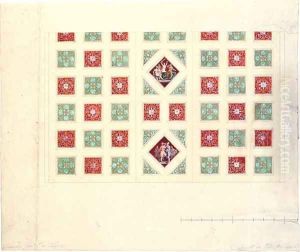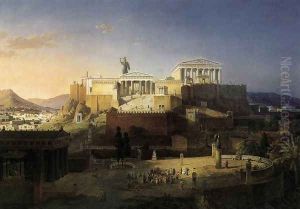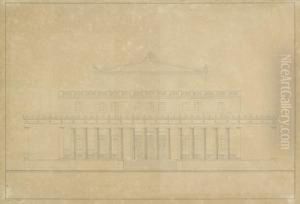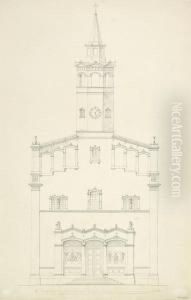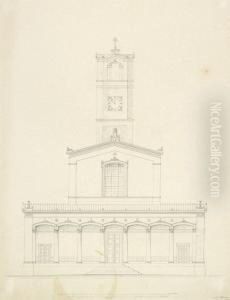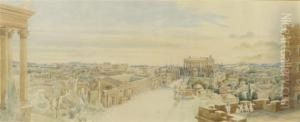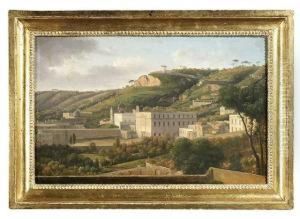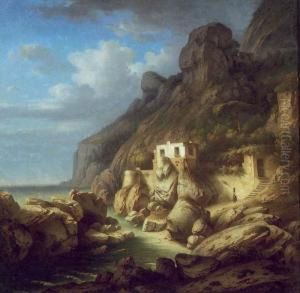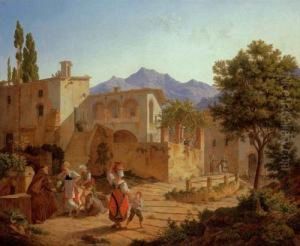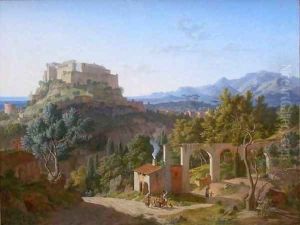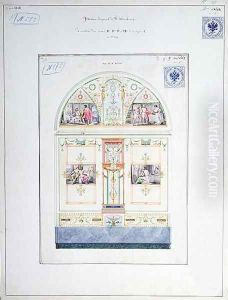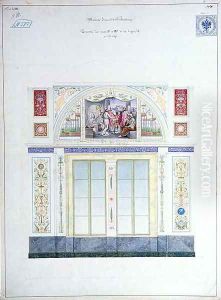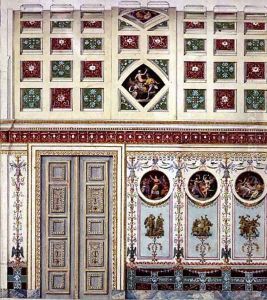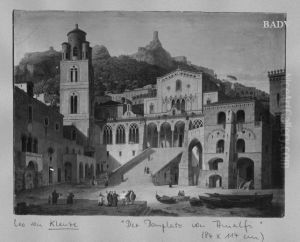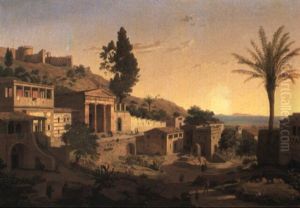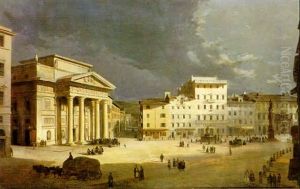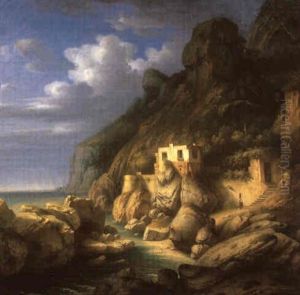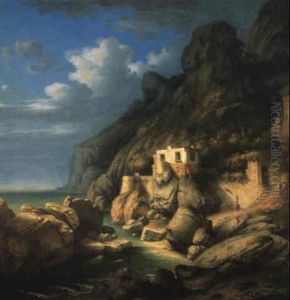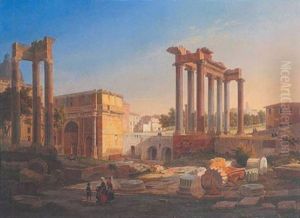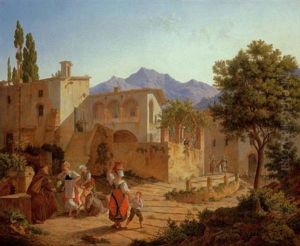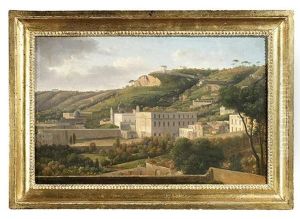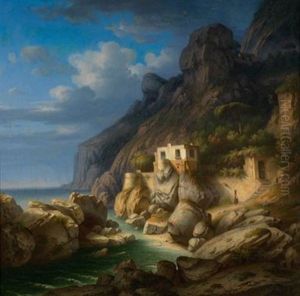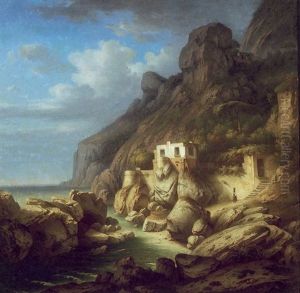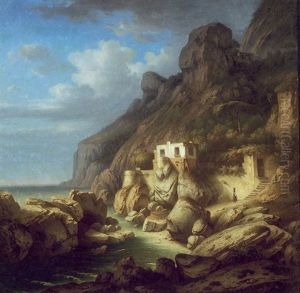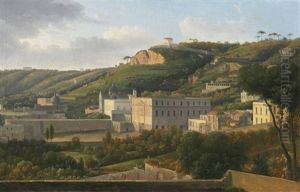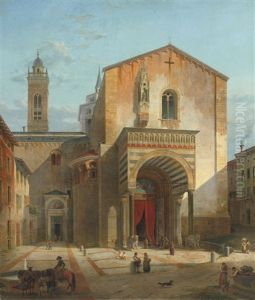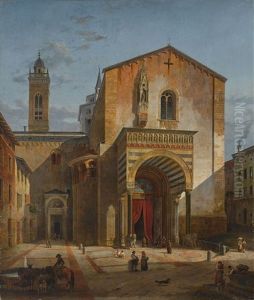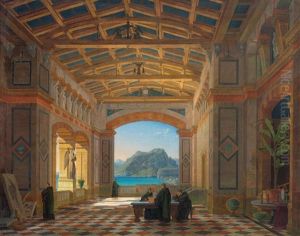Leo Von Klenze Paintings
Leo von Klenze was a German neoclassicist architect, painter, and writer who was one of the most prominent architects of the 19th century, shaping the architectural landscape of Munich, as well as contributing significantly to the construction in Greece, Russia, and elsewhere. Born on February 29, 1784, in Buchladen, Schleswig (now part of Germany), Klenze was deeply influenced by his travels to Italy and Greece, which played a pivotal role in the development of his architectural style.
Klenze's career took a significant turn when he was appointed court architect to Ludwig I of Bavaria in 1816. This position allowed him to embark on an ambitious program of building that would transform Munich into a major cultural center. Among his most notable projects in Munich are the Königsplatz, the Glyptothek, the Alte Pinakothek, and the Ruhmeshalle. His designs were characterized by their grandeur and adherence to classical ideals, drawing inspiration from ancient Greek and Roman architecture.
Beyond Munich, Klenze's work had a considerable impact. In Greece, he was involved in the planning of the city of Athens and designed the National Museum. In Russia, he designed the New Hermitage in Saint Petersburg, which was one of the first public museums in Europe and is today part of the Hermitage Museum. His influence extended through his writings as well, in which he advocated for the integration of art and architecture with urban planning.
Klenze was not just an architect but also a painter, with a keen interest in landscapes and architectural painting. His artworks, much like his buildings, reflect the classical influence that dominated his creative vision. Despite his contributions to architecture and art, Klenze's work has sometimes been overshadowed by his contemporaries. However, his role in shaping the neoclassical movement and his influence on urban development in the 19th century remain undeniable.
Leo von Klenze died on January 27, 1864, in Munich, leaving behind a legacy that continues to be celebrated for its architectural brilliance and its contribution to the cultural heritage of Europe. His work is a testament to the enduring appeal of classical ideals in architecture and the arts, and his vision played a crucial role in defining the aesthetic and urban character of the cities he worked in.
